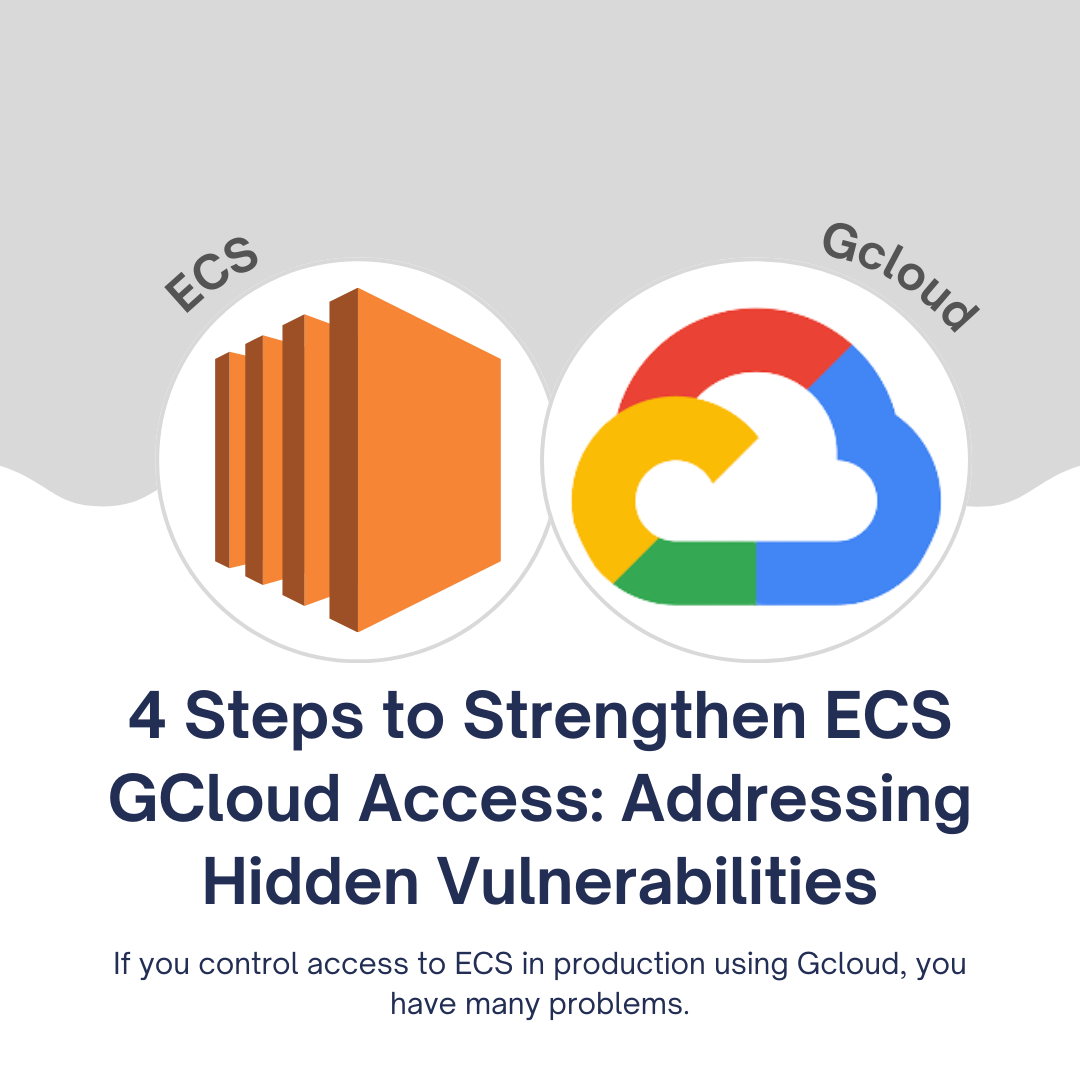4 Steps to Strengthen ECS GCloud Access: Addressing Hidden Vulnerabilities

Introduction
Ensuring efficient and secure access to Amazon Elastic Container Service (ECS) in production is paramount for maintaining product speed and reliability. Troubleshooting, bug fixes, and incident resolutions rely on rapid data access. However, numerous teams grapple with suboptimal access solutions, leading to both security risks and inefficient workflows. In this article, we'll delve into the five main challenges associated with ECS GCloud access, their impacts, and practical strategies to mitigate these issues.
1. Recognize the 5 Major Challenges in ECS GCloud Access
Access management in ECS using GCloud comes with its set of hurdles, often overlooked but vital to address:
a. Single Sign-on & Multi-Factor Authentication (MFA)
The absence of robust authentication mechanisms leaves your system vulnerable to unauthorized access.
b. Audit Trials and PII Protection
Without adequate audit capabilities, you risk failing compliance requirements and exposing sensitive data.
c. Compliance (GDPR, PCI, SOC2, and HIPAA)
Compliance standards vary by industry, and failing to meet them can result in severe penalties and reputational damage.
d. Developer Experience
A cumbersome access process can lead to productivity bottlenecks, impacting your development teams.
2. Implement ECS Access Improvements Gradually
Utilize the 80/20 rule to enhance ECS access management incrementally:
a. Add ECS to Systems You Already Manage
If you are already using Google Workspaces, you can integrate ECS without the need for a separate LDAP directory.
b. Simplify Single Sign-On (SSO) and Session Recording
Implementing SSO for SSH and recording ECS sessions may seem complex, but look for tools that can streamline these processes. Cloud Shell solutions from AWS/Google Cloud and platforms like Runops can simplify these tasks.
c. Prioritize Features Based on Industry Needs
Consider your industry's specific requirements. For industries with fewer regulatory constraints, focus on improving Developer Experience, SSO, and MFA to enhance efficiency. Highly regulated industries should prioritize compliance features.
d. Leverage Tools for Multiple Access Needs
Streamline access management by using a single tool for ECS, AWS/GCP, databases, Kubernetes, servers, and more. This reduces complexity and improves overall efficiency.
3. Add Friction to Unwanted Access Methods
Discourage the use of insecure access methods by making them less convenient:
a. Introduce Form Submissions
If the current access method lacks security features, consider adding a form submission step to discourage its use. This introduces an element of inconvenience and encourages teams to opt for more secure methods.
b. Jira Request for Console Access
For those using the AWS web console instead of automated Infrastructure as Code (IaC) pipelines, you can make console access more challenging by requiring a Jira request. While not revoking access outright, this added complexity nudges teams towards adopting more secure practices.
4. Make the Right Way the Easiest
Ultimately, aim to make the most secure access methods also the most convenient:
a. Improve the User Experience
Continuously work on enhancing the user experience of the recommended access methods, making them not only secure but also user-friendly.
b. Provide Training and Support
Offer training and support to ensure that teams are comfortable and proficient with the secure access methods.
Conclusion
Effectively managing ECS GCloud access is crucial for ensuring the security and efficiency of your production environment. By addressing the five key challenges, implementing improvements incrementally, discouraging insecure methods, and prioritizing convenience for secure access, you can enhance your ECS access management and reduce security risks, ultimately benefiting your organization's productivity and compliance efforts.
